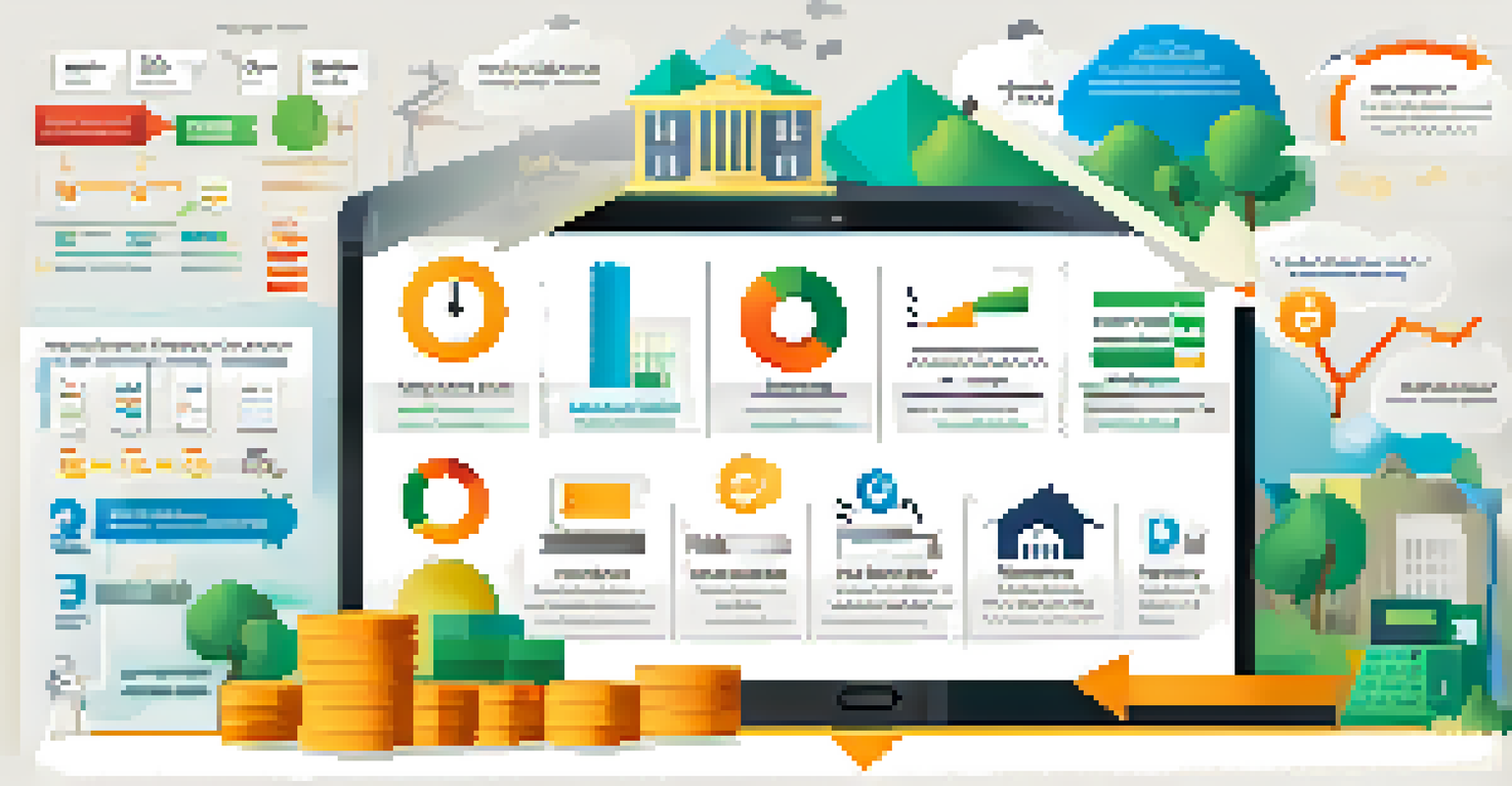What to Know About Mortgage Underwriting Processes

Understanding the Mortgage Underwriting Process
Mortgage underwriting is a critical step in the home-buying journey. It involves evaluating your financial information to determine if you qualify for a loan. Think of it as the lender’s way of making sure you're a good fit for the mortgage, ensuring that both you and the lender are protected.
The way to get started is to quit talking and begin doing.
During this process, underwriters will review your income, credit score, debts, and assets. They want to see the complete picture of your financial health. This helps them assess the risk involved in lending you money for your home purchase.
In essence, underwriting is like a financial check-up. Just as you'd see a doctor for a health evaluation, lenders need to assess your financial condition to ensure you can handle mortgage payments comfortably.
Key Documents Required for Underwriting
When it comes to underwriting, documentation is king. You’ll need to provide various documents, such as tax returns, pay stubs, bank statements, and information on any debts. This paperwork helps the underwriter verify your financial status and income stability.

It's essential to gather these documents early in the mortgage process. Being prepared can help speed up underwriting, reducing overall delays. Remember, the more complete your documentation, the smoother the process will be.
Mortgage Underwriting Explained
Mortgage underwriting evaluates your financial health to determine your eligibility for a loan.
Think of this stage as assembling a puzzle. Each document is a piece that, when put together, helps create a clear picture of your financial situation for the underwriter.
The Role of Credit Scores in Underwriting
Your credit score plays a pivotal role in the underwriting process. It provides lenders with insight into your creditworthiness and how responsibly you handle debt. Generally, a higher credit score can lead to better loan terms and lower interest rates.
Success usually comes to those who are too busy to be looking for it.
If your credit score is on the lower side, don’t panic just yet. Underwriters also consider the overall context, such as your income and savings. Sometimes, a stable job and solid savings can offset a less-than-perfect credit score.
Think of your credit score as your financial report card. Just as grades can reflect a student's performance, your score reflects your financial habits and responsibility.
Debt-to-Income Ratio and Its Importance
Debt-to-income (DTI) ratio is another crucial factor in the underwriting process. This percentage compares your monthly debt payments to your gross monthly income. Lenders typically prefer a DTI ratio below 43%, but lower is always better.
A lower DTI indicates that you have a manageable level of debt compared to your income, making you a more appealing candidate for a mortgage. Conversely, a high DTI could raise red flags for underwriters, suggesting that you may struggle to make your mortgage payments.
Essential Documents for Approval
Gathering key documents early in the process can streamline underwriting and improve your chances of approval.
Imagine your DTI as a balancing scale. If your debts weigh too heavily on one side compared to your income, it might tip the scale unfavorably during underwriting.
The Underwriting Decision: Approve, Deny, or Suspend
Once the underwriter reviews your application, they will make one of three decisions: approve, deny, or suspend. An approval means you meet the lender's criteria, while a denial suggests you may need to improve your financial standing before applying again.
A suspended decision often means the underwriter needs more information or clarification on certain aspects of your application. This can be a temporary hold, so don’t be alarmed; it simply means they want to ensure everything is clear before proceeding.
Think of this decision as a gatekeeper. It’s their job to ensure that only qualified applicants move forward, protecting both you and the lender from potential financial pitfalls.
How Long Does the Underwriting Process Take?
The length of the underwriting process can vary, but it typically takes anywhere from a few days to a couple of weeks. Factors influencing this timeline include the complexity of your financial situation and how quickly you provide the required documents.
If everything is in order, you might find that your application moves along quite smoothly. However, delays can happen, especially if the underwriter requires additional information or clarification.
Understanding Credit Scores
Your credit score significantly impacts loan terms, but a good income and savings can mitigate low scores.
Consider this process like baking a cake. If you have all the right ingredients and follow the recipe, it’ll come together quickly. But if you miss a step or ingredient, it may take longer to achieve that perfect result.
Common Underwriting Challenges and Solutions
Many borrowers encounter challenges during the underwriting process, such as low credit scores or high DTI ratios. These issues can feel daunting, but understanding them is the first step toward finding solutions. For instance, improving your credit score before applying can significantly boost your chances.
Additionally, being proactive in addressing potential concerns can help. For example, if you know your DTI is higher than recommended, consider paying down debts before applying, or discuss options with your lender.

Think of these challenges as roadblocks on your journey to homeownership. With the right strategies and preparations, you can navigate around them and keep moving toward your goal.